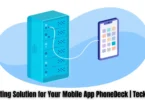Everyone talks about building the next big thing in tech—but few share what it really takes to do it. In this post, we’re going to walk you through how we built an AI unicorn from the ground up. It wasn’t easy, and it didn’t happen overnight.
We started with a simple idea. Over time, we turned it into a powerful AI product that solved real problems and attracted real users. Step by step, we’ll show you how we built an AI unicorn, the challenges we faced, and the lessons we learned along the way.
Whether you’re a startup founder, tech lover, or just curious, this story is for you.
The Spark: Where It All Started

Every journey starts with a small idea. Here’s how we found the problem and turned it into something big.
We Noticed a Real Problem in the Market
We didn’t start with AI—we started by listening.
- People were wasting time doing tasks AI could do better.
- Many tools were too complex or slow to use.
- Small businesses lacked smart tech they could afford.
- We saw a gap no one was solving well.
We Asked Ourselves the Right Questions
Questions helped us stay focused on what matters.
- Who needs this the most?
- Can AI actually solve this problem today?
- What would a simple, helpful solution look like?
We Sketched Out a Rough Idea
We didn’t write code on day one—we started with pen and paper.
- We drew what the product could look like.
- We listed out key features we wanted.
- We asked friends and mentors for early feedback.
We Stayed Focused on Solving One Problem Well
Trying to solve everything at once doesn’t work.
- We picked one main pain point.
- We built around that problem only.
- We kept things simple and easy to test.
You may also like it:
Personal Finance Guide: Tips for Financial Success
Smart Home Trends: Top Innovations for 2025
Easy Budgeting Tips: Manage Your Money Smartly
Building the Right Team
You can’t build an AI unicorn alone. We needed people with the right skills, mindset, and passion to bring the idea to life.
We Hired for Attitude, Not Just Skills
Skill matters, but the right attitude builds real teams.
- We looked for people who love to solve problems.
- We wanted learners, not know-it-alls.
- Everyone needed to care about the mission.
- Teamwork was more important than titles.
We Started Small and Focused
A small, strong team beats a big, scattered one.
- We only hired when we truly needed someone.
- Everyone wore multiple hats in the early days.
- Our first hires shaped the company culture.
We Mixed Tech Talent With Business Thinking
Tech is the engine, but strategy drives growth.
- We had developers who understood user needs.
- Our business lead focused on product-market fit.
- Designers made sure it was simple to use.
- Everyone brought different strengths to the table.
We Created a Culture of Trust and Speed
Good teams move fast—but only when they trust each other.
- We encouraged open feedback and clear talk.
- Mistakes were okay—as long as we learned from them.
- We kept meetings short and decisions quick.
From Idea to MVP
Turning an idea into a working product was the biggest step. Here’s how we moved fast and kept things simple.
We Focused on a Simple, Solvable Problem
The best MVPs do one thing really well.
- We picked one core feature that solved a real need.
- We dropped extra ideas that made it too complex.
- Our goal was speed, not perfection.
- We wanted something users could try fast.
We Used the Right Tools for Speed
Quick progress comes from smart tool choices.
- We used no-code tools for early testing.
- Open-source libraries helped us move faster.
- Cloud platforms made setup and scaling easier.
- We didn’t waste time building things from scratch.
We Built, Tested, and Improved Quickly
Feedback was more useful than guesses.
- We launched a basic version fast.
- Early users gave honest feedback.
- We improved based on what they said.
- We didn’t wait for it to be “perfect.”
We Kept the User in Mind at Every Step
Great tech is easy to use and solves a clear problem.
- The design was clean and simple.
- We made sure it worked on any device.
- We wrote clear messages and helpful instructions.
- Every feature had a reason to exist.
Getting Users and Feedback
After building the MVP, our next challenge was getting people to use it and tell us what they thought.
We Reached Out to Real Users Early
Real feedback only comes from real users.
- We shared the product in online communities.
- Friends, mentors, and early supporters helped spread the word.
- We gave free access to a small test group.
- Early users were excited to try something new.
We Asked Simple, Honest Questions
We didn’t need praise—we needed the truth.
- “What do you like most?” helped us see what to keep.
- “What confused you?” showed us where to improve.
- “Would you use this again?” gave us our biggest clue.
- We kept surveys short and easy to answer.
We Watched How People Used the Product
Actions speak louder than words.
- We tracked where users clicked and where they got stuck.
- Simple analytics showed what features they used most.
- Session recordings helped us spot design problems.
We Improved One Step at a Time
Big changes came from small improvements.
- We released updates every few days.
- Each version solved one clear problem.
- Users saw their feedback turn into real changes.
- That made them trust us and stick around.
Scaling the Product
Once we had something users loved, it was time to grow. Scaling meant making the product faster, stronger, and ready for more users.
We Strengthened the Backend for Growth
A solid foundation helped us handle more traffic.
- We moved to cloud services that could grow with us.
- Our servers auto-scaled based on user activity.
- We fixed slow-loading parts of the app.
- We made sure it worked smoothly under pressure.
We Made the Product Easy to Use at Scale
More users meant more variety—so the product had to be simple.
- We improved the user interface based on feedback.
- We added clear guides and tooltips.
- We made sign-up and onboarding super easy.
- We tested the product on different devices and networks.
We Automated What We Could
Manual work doesn’t scale—automation saves time.
- Customer support used chatbots for basic questions.
- We built auto-reports and alerts for system issues.
- Emails, onboarding flows, and updates were automated.
- Our dev team used CI/CD pipelines to push updates fast.
We Kept Listening While We Scaled
Growing doesn’t mean ignoring users.
- We stayed active in our user community.
- We ran regular surveys to hear what they needed.
- Feedback channels stayed open at every stage.
- Growth was always tied to improving the experience.
Finding the Right Investors

To grow faster, we needed smart money—investors who believed in our mission and could help us scale.
We Focused on Investors Who Got Our Vision
We didn’t chase just any funding—we wanted the right fit.
- We looked for investors with AI or tech experience.
- We chose people who shared our long-term goals.
- We wanted support, not just money.
- Values and mindset mattered more than hype.
We Built a Solid Pitch That Told a Real Story
Our pitch wasn’t flashy—it was honest and clear.
- We shared the problem, the solution, and the impact.
- Real user stories made the product come alive.
- We showed growth, feedback, and early results.
- We kept slides simple and easy to follow.
We Practiced, Rejected, and Improved
Not every pitch worked—but each one taught us something.
- We got rejected many times—it was part of the process.
- Feedback from investors helped us sharpen our message.
- We kept practicing until our story was clear and strong.
- Each “no” brought us closer to a better “yes.”
We Chose Investors Who Added Real Value
Money is good—but smart help is better.
- Some investors helped with hiring and strategy.
- Others opened doors to networks and media.
- We stayed in touch with mentors, even before funding.
- The right investors felt like part of the team.
Culture and Leadership
A strong product needs a strong team culture. We worked hard to lead with purpose and build a place people loved to work.
We Built a Culture of Trust and Openness
People do their best work when they feel safe and heard.
- We encouraged honest feedback from day one.
- Team members could speak up anytime—no fear.
- Everyone had a voice, no matter their role.
- We celebrated wins and learned from mistakes.
We Led by Example, Not Just Words
Leadership isn’t about control—it’s about action.
- Founders worked alongside the team every day.
- We showed up early, stayed late, and supported each other.
- We owned our mistakes and stayed humble.
- We always followed the values we talked about.
We Focused on Learning and Growth
Growth isn’t just for the product—it’s for people too.
- Team members got time to learn and explore.
- We shared books, courses, and resources openly.
- Mistakes were treated as learning steps, not failures.
- Regular feedback helped everyone improve.
We Protected What Made Us Unique
As we grew, we made sure the culture stayed strong.
- We hired people who fit the team vibe.
- Onboarding included our values and mission.
- We kept meetings short and meaningful.
- Team rituals (like demos or wins of the week) kept us connected.
Key Challenges and How We Solved Them
No startup journey is smooth. We hit roadblocks—but we tackled each one with smart thinking and teamwork.
Challenge: Too Many Features, Too Soon
We tried to build too much at once and lost focus.
- Users got confused with too many options.
- The product felt heavy and hard to use.
- Our dev team was stretched thin.
- We solved it by cutting back to one core feature and doing it really well.
Challenge: Low Early User Engagement
People signed up, but didn’t stay active.
- Many users didn’t complete onboarding.
- Features were unclear or hard to find.
- We had no follow-up to guide them.
- We fixed it by improving the user flow and adding helpful tips and emails.
Challenge: Hiring Took Too Long
Finding the right people wasn’t easy.
- We had high standards but few leads.
- Good talent got offers from bigger names.
- Interviews dragged on for weeks.
- We solved it by building a referral system and speeding up our process.
Challenge: Scaling Broke a Few Things
More users meant more bugs and slowdowns.
- Our servers crashed during traffic spikes.
- Bugs slipped through in fast releases.
- Customer support got overloaded.
- We solved it by upgrading infrastructure, testing more, and automating support.
Looking Ahead: What’s Next
We’re proud of how far we’ve come—but we’re just getting started. The future is full of big plans and exciting goals.
We’re Expanding the Team
More hands, more minds, more innovation.
- We’re hiring in product, design, and AI engineering.
- We want people who love solving real-world problems.
- New roles will help us move faster and smarter.
- Our remote culture lets us hire from anywhere.
We’re Adding Smarter AI Features
We’re making the product more powerful—without making it harder to use.
- We’re training new models for better accuracy.
- We’re working on personalization for every user.
- Simpler interfaces will help non-tech users too.
- AI will soon handle more tasks on its own.
We’re Exploring New Markets
The problem we solve isn’t limited to one niche.
- We’re talking to users in education, healthcare, and finance.
- We’re testing localized versions in new regions.
- Feedback helps us shape features for each market.
- Partnerships will help us reach more users globally.
We’re Staying True to Our Vision
Even as we grow, our mission stays the same.
- Keep the product simple, smart, and useful.
- Put users first in every decision.
- Build a company culture that lasts.
- Never stop learning, improving, and dreaming big.
Conclusion
That’s how we built an AI unicorn—one small step at a time. It wasn’t easy, but with the right team, clear focus, and real user feedback, we turned a simple idea into something big. And the journey isn’t over yet.
We’re excited about what’s next and ready to keep building. If you’re dreaming of your own startup, start small, stay focused, and never stop learning.
FAQs: How We Built an AI Unicorn
What does “AI unicorn” mean?
An AI unicorn is a startup that uses artificial intelligence and is valued at over $1 billion.
How long did it take to build the AI unicorn?
It didn’t happen overnight. It took us around 2–3 years of hard work, testing, learning, and improving.
Do I need a tech background to start an AI startup?
Not always. But you do need a strong team with tech skills and a clear problem to solve.
How did you get your first users?
We shared the product in online groups, asked friends to try it, and gave free access to early testers.
How did you find investors?
We pitched to investors who understood AI and believed in our mission—not just anyone with money.
What was your biggest challenge?
One of the biggest was building too many features too fast. We had to slow down and focus on what really mattered.
How important is feedback from users?
It’s everything. Feedback helped us shape the product, fix problems, and grow the right way.
Bonus Points
- Stay close to your users: Talk to your users often—they’ll tell you what to build and what to fix.
- Build fast, then improve: Don’t wait for perfect. Launch early and improve with real feedback.
- Keep your core team small at the start: A small, focused team moves faster and communicates better.
- Don’t chase trends blindly: Stick to solving real problems instead of following the latest hype.
- Use free and low-cost tools early on: Save money by using open-source tools, no-code platforms, and free trials.
- Be ready to pivot: If something isn’t working, change direction quickly and clearly.
- Share your story online: Building in public helps attract users, feedback, and even investors.
- Focus on one key metric: Pick one goal (like active users) and build everything around improving it.
- Take care of your team: A happy, motivated team builds better products and stays longer.
- Celebrate small wins: Each step forward matters. Take time to pause and enjoy the progress.
You may also like it:
Saving Money Tips for Students: Master Your Finances Now!
Startup Marketing Strategies: Boost Your Business Fast







